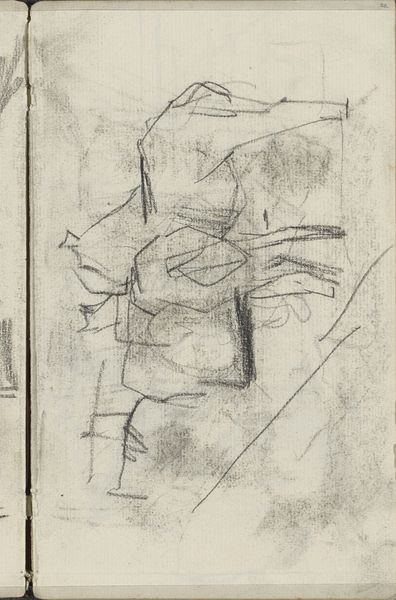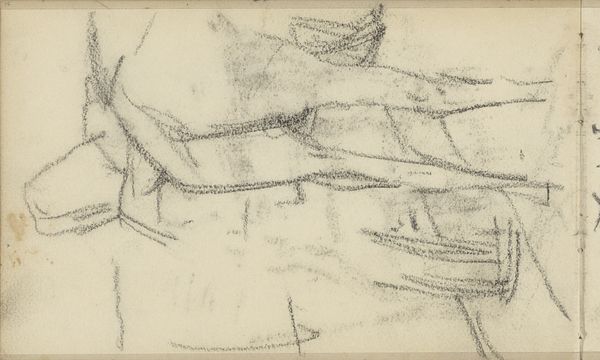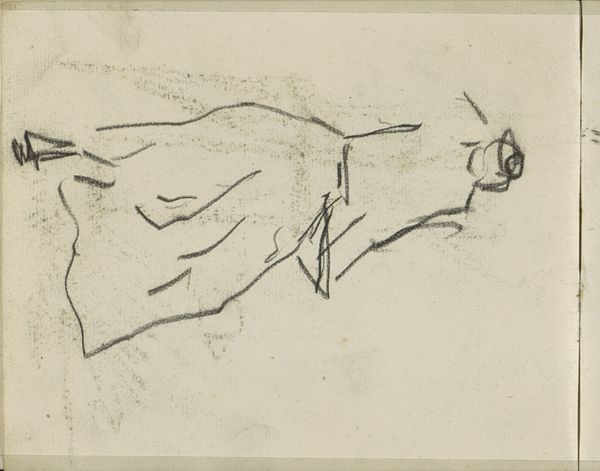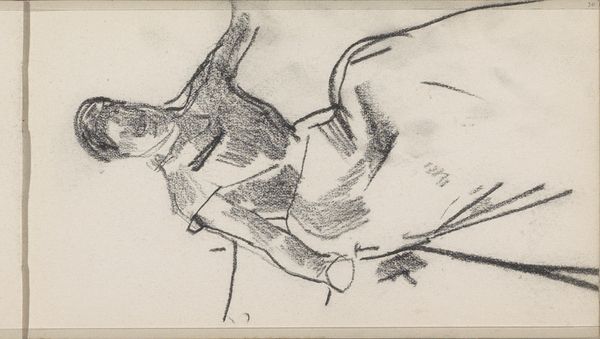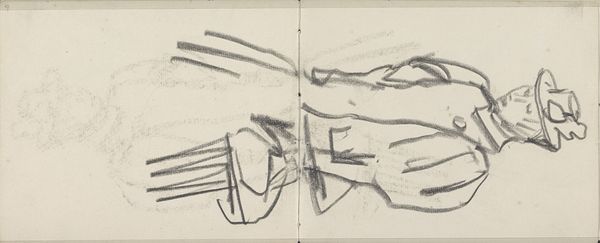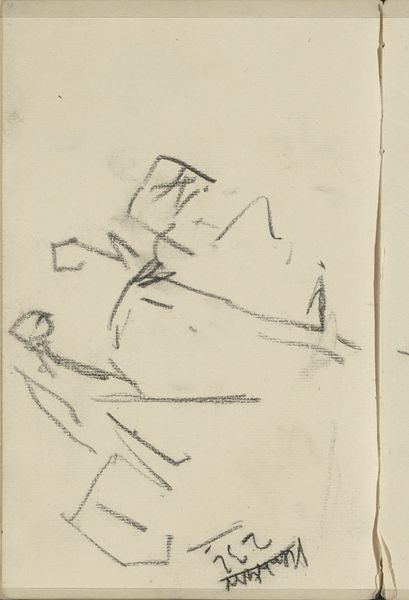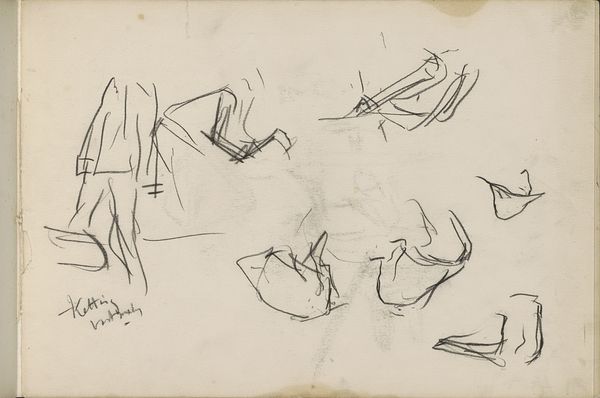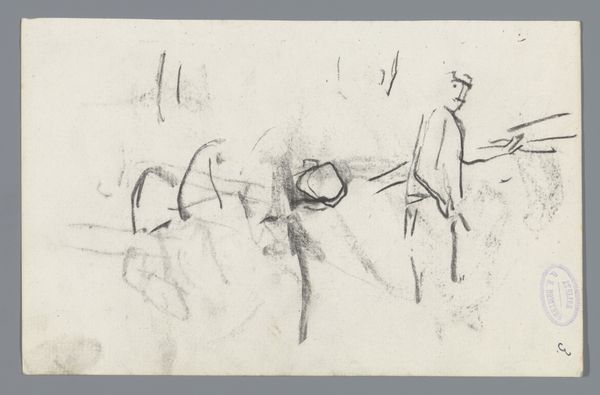
Copyright: Rijks Museum: Open Domain
Curator: This is a drawing entitled "Studie," created by George Hendrik Breitner sometime between 1886 and 1890. It’s part of the Rijksmuseum collection, executed in graphite on paper. Editor: My first reaction is a feeling of immediacy. It's raw, stripped down—like a fleeting impression captured in the most economical way. Is this perhaps architectural in its origins? Curator: Indeed. Breitner, a prominent figure in Amsterdam Impressionism, often captured city life and its constant state of flux. This study likely functioned as preparatory material for larger paintings. We might not readily see it, but that frenetic line work, the texture of the graphite dragged over what looks like inexpensive paper – all very much tied into labor practices, economics. Editor: The line work does have an interesting texture. I agree that this feels quite deliberately about showing labor. Notice the density of line in some areas versus the almost ghostlike quality in others—he clearly knew the pressure and speed he was using, and to what affect. And what did inexpensive drawing materials signify socially for Breitner’s studio? Curator: Access and pragmatism. It allowed Breitner and his workshop staff, probably made up of working class, perhaps impoverished artists, to explore and refine compositions rapidly, reducing material risks. It’s worth remembering Breitner came from modest beginnings. His social realism sought to depict an everyday aesthetic for and by common people, and his drawings reflected that reality by incorporating affordable and humble materials like these. Editor: That really anchors my perspective on this piece. It underscores his desire to connect with the working-class experience of fin-de-siecle Amsterdam by choosing this exact means of production, that is graphite and paper. You know, what could be perceived as something unfinished becomes powerful because of the specific means he engaged. The choice isn’t an omission! Curator: Precisely, the lack of embellishment isn't due to expediency or lack of skills. His materials are deeply intertwined with the social and economic context in which he was working and aimed to reflect a specific cultural politics. By adopting a more ‘real’ artform he sought to promote radical social change. Editor: Thinking about the way social status of material could empower social statements makes it much easier to identify its legacy. What would modern-day “low art” or everyday design elements tell about today's labor and economic practices? That is very evocative, and food for further thought! Curator: Absolutely! Studying drawings, in many ways, like 'Studie,' brings a unique perspective. The social intentions encoded in 'commonplace' raw art forms continue to enrich public understanding of Dutch art history.
Comments
No comments
Be the first to comment and join the conversation on the ultimate creative platform.
